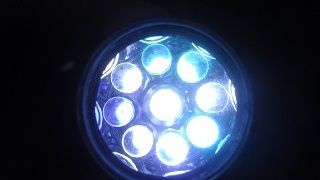From Guest Blogger Dr. Bulb: How to Dispose of Lights Containing Mercury and LEDs

Which Lights Are Environmentally Hazardous?
Incandescent bulbs are not considered hazardous waste. However, many other lamp types contain mercury as the main source of fluorescence. Fluorescent lamps, including compact fluorescent (CFL) bulbs, contain mercury, which makes them a chemical hazard to people and the environment. They pose no threat to your health . . . unless they break, which releases the mercury and other chemicals into the air.
Exposure to elemental mercury can cause tremors, emotional instability, headaches, and insomnia. High levels of ingested mercury can cause kidney defects, respiratory failure, and even death. According to the EPA, the most dangerous exposures to mercury occur in poorly ventilated, warm, indoor spaces, though it is important to avoid breaking lights containing mercury in any situation.
Metal halide lamps also contain mercury. Like fluorescent and CFL lamps, metal halide does not pose a health risk unless broken. Currently, the EPA only has regulations requiring commercial entities to properly dispose of metal halide lamps, but every property owner should consider recycling as the best possible option for getting rid of their burnt-out metal halide lights.
Fluorescent, metal halide, and HID bulbs should all be recycled either at the end of their lives or immediately following a break. Millions of lights containing mercury are sold in the US each year and, sadly, many of them are discarded incorrectly. Lights containing mercury that end up in the trash pose a serious threat to sanitation workers, and the buildup of mercury in landfills has the potential to poison nearby land and water sources.
How to Recycle Lights Containing Mercury
In the event that a light containing mercury does break, it is important to protect yourself before cleaning it:
- Shield yourself from the chemical dust with full clothing, gloves, and a mask.
- Turn off central air or fans and open any windows, if possible.
- Scoop up large pieces with a broom and dustpan or a piece of cardboard.
- Use sticky tape, such as duct tape, to pick up small pieces.
- Use a damp paper towel to wipe up any shards or powder from hard surfaces.
- Store all trash in a sealable container.
The broken or old fixture should then be stored in the sealed container in a well-ventilated area until it is time to recycle it.
To recycle lights containing mercury, check your local recycling center. Many will accept hazardous waste, but they may have requirements for proper disposal. Typically, they will ask that the light containing mercury is brought to the recycling center in a box. Resources are available to help you find a recycling program near you that accepts hazardous waste. Some municipalities will collect lights containing mercury from the curb, though the collections may only happen a few times a year.
In some cases, local retailers are willing to take CFLs, fluorescent lamps, and metal halide lights to be recycled. It is best to check with your local establishment before bringing any bulbs in, but a few common chains include Home Depot, True Value, and Lowe’s Home Improvement. Some bulb manufacturers will also provide packaging and labels for customers to mail back their old fixtures after replacing them.
Not only will recycling protect the environment and people from dangerous chemicals, but it allows the other materials in the lamps to be reused. The mercury, metal, and glass of fluorescent and metal halide lamps can all be reused. While the mercury usually finds its way back into fluorescent lamps, the metal and glass can be used in a wide variety of applications where the resources are needed.
Do LEDs Need to Be Recycled?
While LED lights do not have mercury, some do contain small amounts of dangerous chemicals like nickel, lead, and arsenic. It is rare that an LED will break, but if they do, we recommend you take the same precautions to clean up the mess as you would for a fluorescent or metal halide lamp. The risk is minimal due to the very small amount of each chemical that is contained in LEDs—and primarily only in red LED lights.
LEDs may seem like they will last forever, but eventually, like all things, that new LED fixture will die. Currently, there are no regulations requiring LEDs to be recycled. For the most part, they can be placed in the trash. However, some experts encourage recycling LED lights; many of their materials can be reused. In Europe, LEDs are co-collected with CFL and other hazardous waste lamps. The easiest LEDs to recycle are Christmas lights, which some companies, such as Holiday LEDs, will accept by mail.
Protecting the environment is a sensible practice that benefits everyone. It is important to remember the impact we have on the world around us and to consider the consequences before we do something careless or lazy—like tossing a broken CFL in the trash. Sure, it may take more effort to recycle lights containing mercury, but it is a worthwhile effort.
